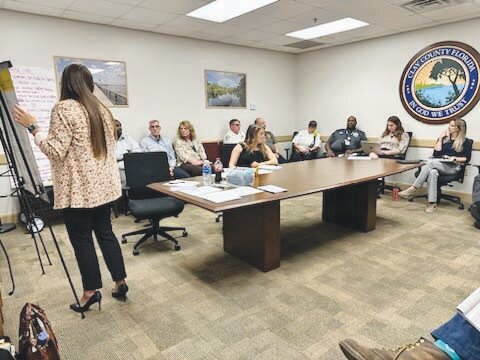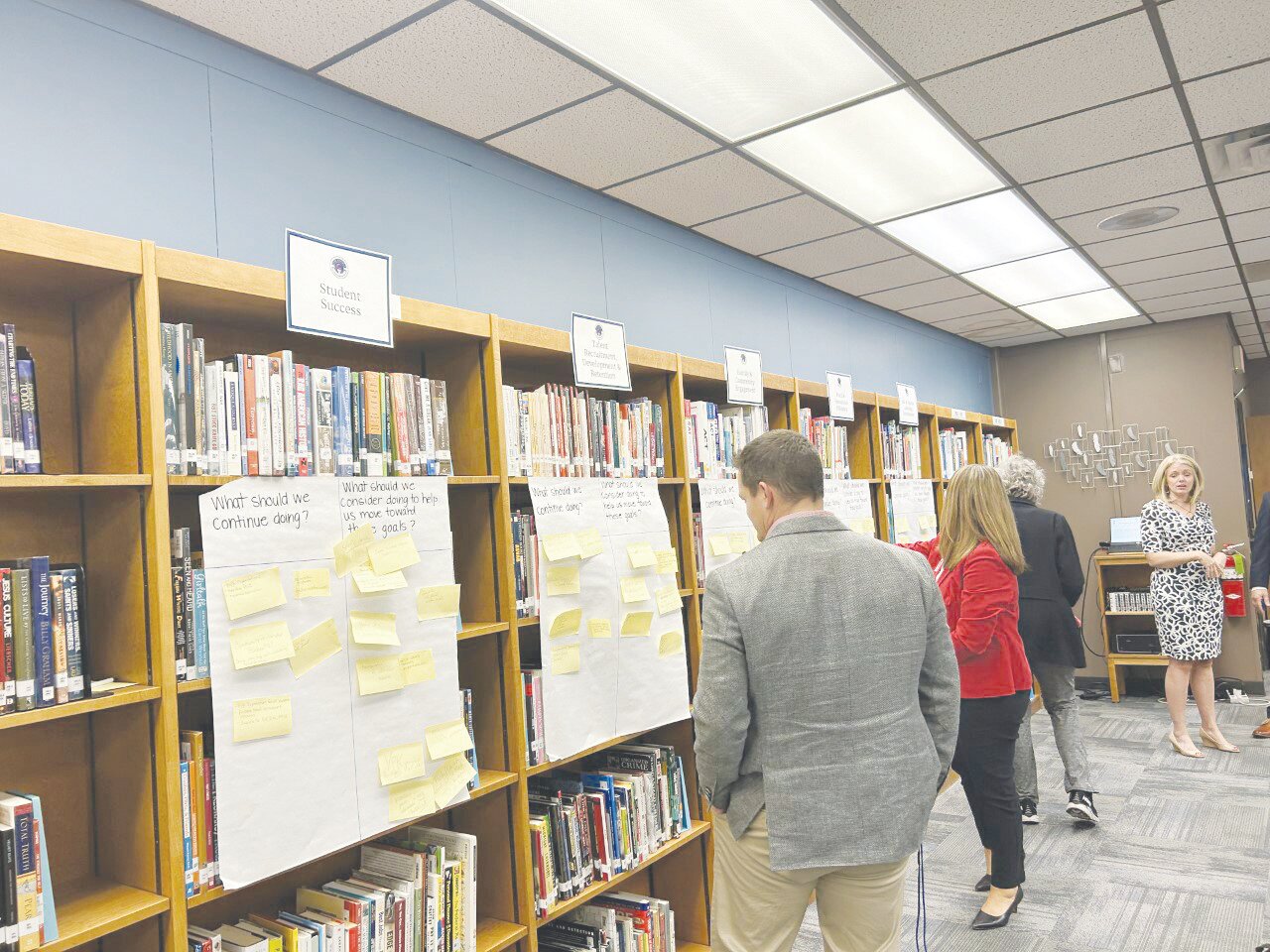County Commission sets its 5-year strategic plan
Vote on five critical categories set for Dec. 12
GREEN COVE SPRINGS – The Clay County Board of Commissioners will get the final version of a five-year Strategic Plan from the Northeast Florida Regional Council at its next meeting on Dec. 12. Last …
This item is available in full to subscribers.
Attention subscribers
To continue reading, you will need to either log in to your subscriber account, below, or purchase a new subscription.
Please log in to continueDon't have an ID?Print subscribersIf you're a print subscriber, but do not yet have an online account, click here to create one. Non-subscribersClick here to see your options for subscribing. Single day passYou also have the option of purchasing 24 hours of access, for $1.00. Click here to purchase a single day pass. |
County Commission sets its 5-year strategic plan
Vote on five critical categories set for Dec. 12
GREEN COVE SPRINGS – The Clay County Board of Commissioners will get the final version of a five-year Strategic Plan from the Northeast Florida Regional Council at its next meeting on Dec. 12. Last week’s workshop reviewed goals, targets and actions for five priority categories, including community health and safety, economic and community development, good governance, infrastructure and quality of life.
Commissioners had questions for Assistant County Manager Troy Nagel at a workshop last week, including defining several processes and goals. Nagel said he hopes to tweak the plan for the next commission meeting to meet the project’s deadline.
“I truly liked the fact that each of the (items) were brought down to a measurable goal or objective so that we can tell if we’re achieving what we set out to do,” Commissioner Mike Cella said. “This is truly uncharted territory for the county because we’ve never had a (five-year strategic plan) before.”
Targets include cutting response time for fire rescue by 15%, inspecting all high-risk occupancy buildings, increasing law enforcement staffing to 1.26 deputies for every 1,000 residents, maintaining current law enforcement standards, increasing access to Automated External Defibrillators and Narcan to 250 locations, registering 100 private and nonprofit agencies in Care Connect, increasing solid waste processing capacity to 1,500 average tons a day, increasing recycling volume by 10%, increasing the number of participants in PulsePoint by 20% and maintaining 90% live release rates for sheltered animals.
For economic and community development, targets include attracting five new businesses, attracting 20 new tourism events, reducing the average permit review time for residential review to seven days and commercial to 30 days, reducing the county’s Community Rating system to five, establishing a Building Code Effectiveness Grading Schedule and encouraging at least one agricultural land owner to participate in the Florida Department of Agricultural and Consumer Services Rural and Family Lands Protection Program.
Among the other targets were increasing overall communication participation through social media, websites and newsletters by 50%, increasing involvement in the county emergency alerting systems by 30%, achieving 100% of procurements more than $20,000 being sourced through the county’s procurement portal for fair bidding, ensuring that 95% of staff receive at least 24 hours of training a year, maintaining an annual 90% retention rate and hosting and facilitating 10 meetings with partner organizations.
For infrastructure, targets included increasing ridership with Jacksonville Transportation Authority by 20%, resurfacing 100 miles of roadways, improving or adding 20 miles of sidewalks and trails, maintaining and improving 10,000 feet of pipes and ditches for stormwater, updating Information Technology infrastructure by not allowing the use of machines that are past one year of intended use and reducing electricity and water consumption by 5%.
For quality and balance of life, there will be an increase of county-hosted programs by 20%, an increase of recreational access points by three, an increase of recreational space by 10%, and an increase of conservation land by 10%.
Nagle liked the plan because it included a collaboration between several public, private and governmental entities. That included department heads and directors in the county government, county residents of all districts, critical stakeholders like nonprofits and economic development organizations, constitutional offices, including the Clerk of Court, Sherriff’s Office, Tax Collector, Property Appraiser, Supervisor of Elections, School Board and organizations such as the County Utility Authority, Clay Electric, large land owners and developers and municipalities.
Nagle and the commissioners thanked NFRC CEO Elizabeth Payne and her organization for developing a plan after hosting 30 to 40 meetings.
“It was a pleasure to sit down and listen to the ups and downs of citizens and department and (hear from) the Board of County Commissioners. To be on the same page and really have an aspiration to move forward with your community is inspiring. We’re seeing counties grow and change at their own pace, and Clay County is in the posture of exponential growth,” Payne said.
Peyton Beattie, Community Resource Development Agent at UF-IFAS, and her staff assisted with discussions to establish a seamless effort between the BCC and NEFRC with note-taking, discussion kits, surveys and data collection.
“All (stakeholders) were invited to share what they thought was important for the county’s strategic plan,” Beattie said.
“This truly was a partnership among (several) constitutionals and stakeholders,” Nagle said.
Commissioners were pleased to welcome several stakeholders to the process.
“Having (several) stakeholders, including residents and business people, is crucial in being successful with the strategic plan,” Cella said.
















